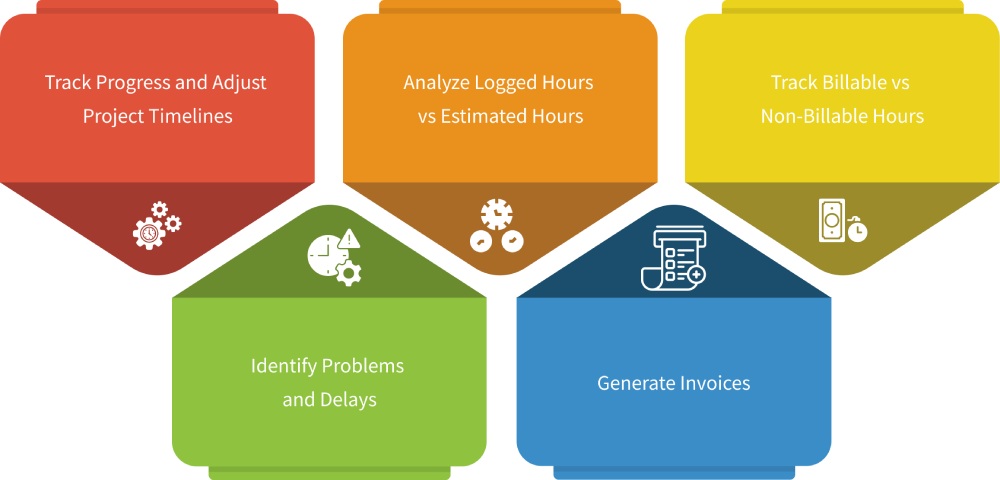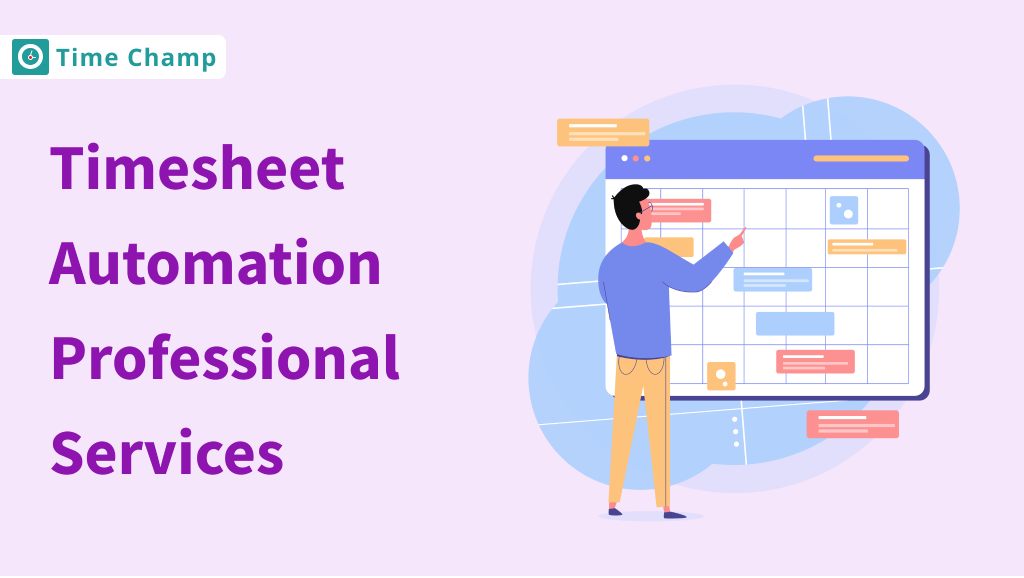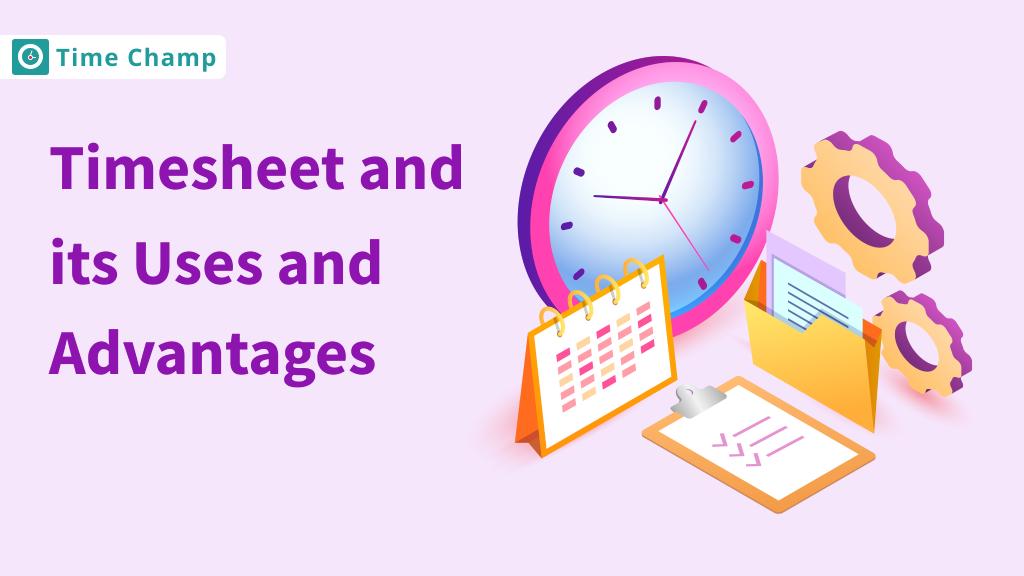Are you struggling to keep your projects on schedule and managing time effectively? You might be unsure how to use timesheet reports for project success. Many organizations face these challenges, leading to delays and billing mistakes. This guide will show you how to use timesheet reports accurately to track your project progress, adjust timelines, and identify issues.
Well, Let’s dive in!
What is a Timesheet Report?
A timesheet report is a data record that shows tracked data of work log hours of an employee including start time, end time, and how much time he spends on a particular task or project. It also shows your employee’s worked hours and provides a clear record of their activities during that specified period.
It’s a valuable tool for managing project deadlines, billing clients, and evaluating team performance. You can generate timesheet reports by using time-tracking software that automatically tracks employee work hours to make it easier to monitor and manage your projects.
How to Use Timesheet Reports to Manage Projects Effectively?
Timesheet reports help you to keep your projects on track. Here’s how to use them effectively:

Track Progress and Adjust Project Timelines
Timesheet reports provide you with data on how much time employees spend to complete their tasks and projects. This report helps you to manage project time effectively and determine whether your project is on track with the planned schedule or not. It is also important to review these reports on a regular basis to keep your projects on track.
Timesheets help you to notice if some of the activities are taking more time than the estimated time. Then you can adjust your project timelines and allocate resources in a way that will help you complete your projects on time. Also, you can look at the reasons why it is so and correct the situation if there are inefficiencies or other factors that slow down the process.
Analyze Logged Hours vs Estimated Hours
Compare the time spent on the task as recorded in the timesheets with the estimated time for the particular task to assess the employee performance. This helps you understand whether an employee is completing a specified task in estimated hours and know where adjustments might be needed to complete the tasks efficiently.
If the employees take more time than their time estimates, then there might be problems such as a lack of clarity of the task or problems with the flow of work. On the other hand, if the tasks are done in less time than estimated, then it might suggest adjusting the future estimates. It is useful to enhance the project plans and increase the efficiency of the project.
Track Billable vs Non-Billable Hours
Timesheets allow you to easily track which hours can be considered billable and which hours can be considered non-billable. Billable hours are the hours an employee spends working on a task or project that you can charge a client for. Non-billable hours are the hours an employee spends on work that you cannot charge a client for.
If you track billable and non-billable hours separately, you ensure that your client invoices reflect the exact amount of work done. This helps you manage your organization’s budget effectively, bill clients accurately, and manage project costs efficiently.
Identify Problems and Delays
Timesheet report provides you with detailed data on projects where work is slowing down or where delays are occurring by reviewing it. It helps you to address any issues and to take action regarding the work quickly by providing extra support, making changes in the process, or some other adjustments to run projects smoothly and to avoid delays to meet the deadlines.
Generate Invoices
It is easy to generate invoices for clients based on the timesheet data submitted by the employees. By Summarizing the total billable hours worked, you can generate accurate invoices that give the actual amount of work done. This process not only helps in determining the accurate billing amount but also assists in charging the clients fairly for the services offered.
When the invoices are clear and accurate, the payment process can be completed quickly without delays, or disputes, and employees can be paid on time. It is useful to maintain good relations with the clients and is beneficial for the financial health of your organization.
Get Accurate Timesheet Reports with Time Champ
Time Champ is the right and best timesheet management software to get accurate timesheet reports. Time Champ helps you to track, and report work hours easily by automatically generating timesheets based on the employee log hours for different tasks or projects.
Its project management feature integrates seamlessly with time tracking, so when employees log into their work, the system instantly updates their timesheets. This automation helps to ensure that the reports are accurate and reflect the true time spent on each task.
In addition to generating timesheets, Time Champ offers flexible reporting options. You can easily get daily, weekly, and monthly timesheet reports, allowing for a comprehensive view of time spent over various periods. Additionally, it provides custom reports for specific date ranges, giving managers and employees flexibility in how they analyze and review their work hours.
Conclusion
Instead of just keeping track of hours worked, using timesheet reports effectively is more important for project success! With a careful approach, these reports can greatly improve how you manage projects, use resources, and measure productivity.
These timesheets help you to keep your projects on schedule and ensure accurate budget planning and billing. By choosing the right tool and regularly checking the data, you can turn the timesheet report into a useful resource for your business!
Try Time Champ today to generate accurate timesheet reports effortlessly!
Sign up for FreeBook a DemoFrequently Asked Questions
If you need to analyze a timesheet, first you must check the total hours an employee worked and compare them with the planned hours for each task. And review activity logs to understand how he used the specified time efficiently to complete given tasks.
Different types of timesheets are there which include daily timesheets, weekly timesheets, and monthly timesheets. Daily timesheets provide worked hours each day, while weekly sheets cover a full week. Monthly timesheets provide a summary of hours for the entire month.
Timesheet reports are used by managers to monitor and manage team productivity, by HRs for payroll processing in organizations, and by employees to track their work hours in organizations. These are also used by freelancers to record billable hours.
A timesheet payroll is a system in which the pay is determined based on the timesheet data of the employees. It records the number of hours that an employee has worked and the number of hours that he or she has worked overtime and then calculates how much an employee should be paid.







